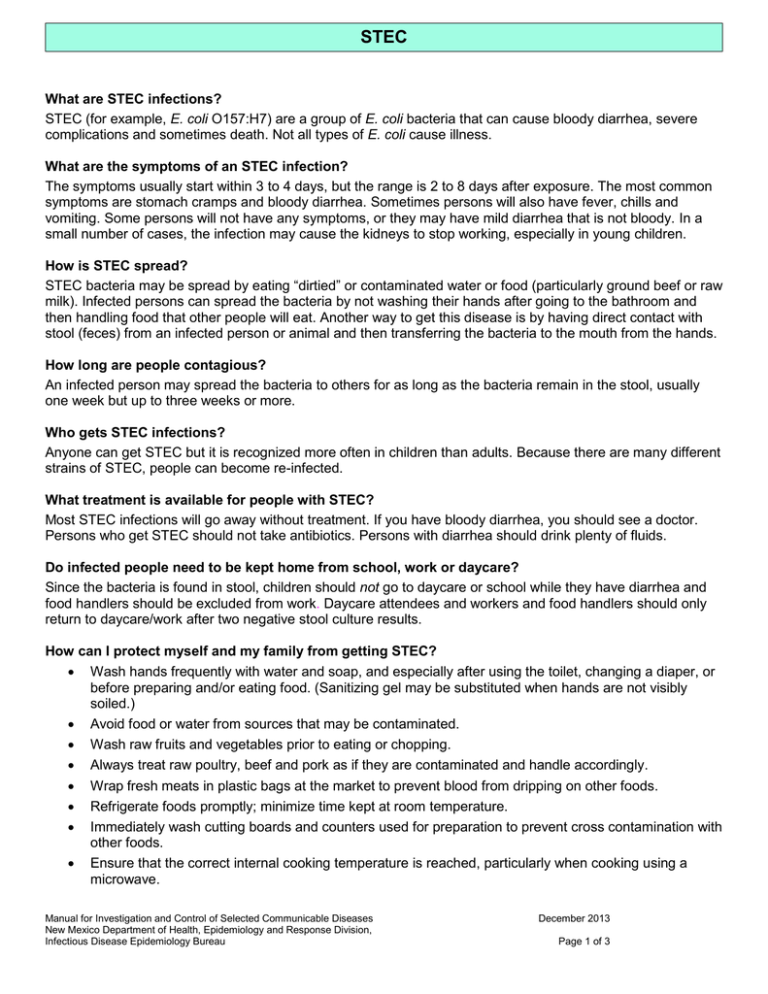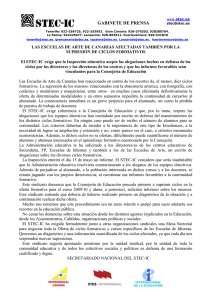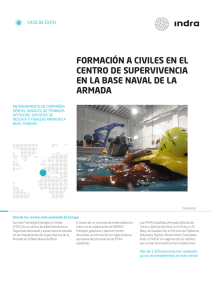What are STEC infections? STEC (for example, E. coli O157:H7) are
Anuncio

STEC What are STEC infections? STEC (for example, E. coli O157:H7) are a group of E. coli bacteria that can cause bloody diarrhea, severe complications and sometimes death. Not all types of E. coli cause illness. What are the symptoms of an STEC infection? The symptoms usually start within 3 to 4 days, but the range is 2 to 8 days after exposure. The most common symptoms are stomach cramps and bloody diarrhea. Sometimes persons will also have fever, chills and vomiting. Some persons will not have any symptoms, or they may have mild diarrhea that is not bloody. In a small number of cases, the infection may cause the kidneys to stop working, especially in young children. How is STEC spread? STEC bacteria may be spread by eating “dirtied” or contaminated water or food (particularly ground beef or raw milk). Infected persons can spread the bacteria by not washing their hands after going to the bathroom and then handling food that other people will eat. Another way to get this disease is by having direct contact with stool (feces) from an infected person or animal and then transferring the bacteria to the mouth from the hands. How long are people contagious? An infected person may spread the bacteria to others for as long as the bacteria remain in the stool, usually one week but up to three weeks or more. Who gets STEC infections? Anyone can get STEC but it is recognized more often in children than adults. Because there are many different strains of STEC, people can become re-infected. What treatment is available for people with STEC? Most STEC infections will go away without treatment. If you have bloody diarrhea, you should see a doctor. Persons who get STEC should not take antibiotics. Persons with diarrhea should drink plenty of fluids. Do infected people need to be kept home from school, work or daycare? Since the bacteria is found in stool, children should not go to daycare or school while they have diarrhea and food handlers should be excluded from work. Daycare attendees and workers and food handlers should only return to daycare/work after two negative stool culture results. How can I protect myself and my family from getting STEC? Wash hands frequently with water and soap, and especially after using the toilet, changing a diaper, or before preparing and/or eating food. (Sanitizing gel may be substituted when hands are not visibly soiled.) Avoid food or water from sources that may be contaminated. Wash raw fruits and vegetables prior to eating or chopping. Always treat raw poultry, beef and pork as if they are contaminated and handle accordingly. Wrap fresh meats in plastic bags at the market to prevent blood from dripping on other foods. Refrigerate foods promptly; minimize time kept at room temperature. Immediately wash cutting boards and counters used for preparation to prevent cross contamination with other foods. Ensure that the correct internal cooking temperature is reached, particularly when cooking using a microwave. Manual for Investigation and Control of Selected Communicable Diseases New Mexico Department of Health, Epidemiology and Response Division, Infectious Disease Epidemiology Bureau December 2013 Page 1 of 3 STEC ¿Qué es la STEC? STEC (por ejemplo, E. coli O157:H7) son un grupo de bacterias llamadas E. coli que pueden producir diarrea con sangre, complicaciones severas y, algunas veces, muerte. No todos los tipos de E.coli causan enfermedades. ¿Cuáles son los síntomas de una infección por STEC? Los síntomas pueden aparecer entre 2 y 8 días después de haber estado expuesto, pero suelen aparecer entre 3 y 4 días. Los síntomas más comunes son retorcijones en el estómago y diarrea con sangre. A veces, también puede darse fiebre, escalofríos y vómitos. Algunas personas pueden no tener ningún síntoma o sólo tener una diarrea leve pero sin sangre. En un pequeño número de casos, la infección puede afectar a los riñones y causar que éstos dejen de funcionar, especialmente en niños pequeños. ¿Cómo se transmite la STEC? STEC se puede transmitir al comer comida o beber agua contaminadas (sucias), especialmente si es carne molida de res o leche no pasteurizada. Las personas infectadas pueden transmitir la bacteria si no se lavan las manos después de ir al baño y entonces tocan la comida que otros van a comer. Otra forma de contraer esta enfermedad es por contacto directo con las heces de una persona o animal infectados, después de tocarlos se transfiere la bacteria de las manos a la boca. ¿Por cuánto tiempo puede alguien contagiar a otros? Una persona infectada puede transmitir la bacteria a otros mientras ésta se encuentre presente en las heces, normalmente durante una semana pero puede ser hasta tres semanas o más. ¿Quién puede contraer una infección por STEC? Cualquiera puede contraerla, pero es más frecuente en niños que en adultos. Como hay muchos tipos diferentes de la bacteria STEC, puede volver a ocurrir en cualquier momento. ¿Cómo se trata una infección por STEC? La mayoría de infecciones por STEC desaparecen sin ningún tratamiento. Las personas infectadas por STEC no deben tomar antibióticos. Si usted tiene diarrea con sangre, vaya a un médico. Las personas que tienen diarrea deben beber muchos líquidos. ¿Es necesario quedarse en casa y no ir a la escuela, a la guardería o al trabajo? La bacteria está presente en las heces, por eso los niños no deben ir a la guardería o a la escuela mientras tengan diarrea. Las personas que trabajan manipulando alimentos no deben ir al trabajo. Los niños y trabajadores de la guardería, y los manipuladores de alimentos podrán regresar cuando tengan dos resultados negativos en sus pruebas de heces y la aprobación de las autoridades de salud pública. ¿Cómo puedo protegerme yo y también proteger a mi familia contra estas infecciones? Lávese las manos con frecuencia con agua y jabón, sobre todo después de usar el baño, cambiar pañales y antes de preparar o comer alimentos. (En lugar de lavárselas puede usar un gel desinfectante para manos cuando no se vean sucias). Evite agua o comida que puedan provenir de fuentes contaminadas. Lave las frutas y verduras antes de comerlas o cortarlas. Siempre trate la carne cruda de pollo, pavo, res y puerco con precaución, como si estuviera contaminada, y manipule de forma adecuada. Ponga la carne cruda dentro de bolsas de plástico cuando la compre en el mercado para que la sangre de ésta no se mezcle con otros alimentos. Ponga los alimentos en el refrigerador pronto, deben pasar el menor tiempo posible fuera. Lave inmediatamente los tableros para cortar y mostradores que ha usado para preparar estos alimentos, de esta forma evita que otros alimentos se puedan contaminar. Asegúrese de que la carne alcanza la temperatura interna correcta cuando se cocina, sobre todo si usa un microondas para cocinarla. Manual for Investigation and Control of Selected Communicable Diseases New Mexico Department of Health, Epidemiology and Response Division, Infectious Disease Epidemiology Bureau December 2013 Page 2 of 3 STEC Manual for Investigation and Control of Selected Communicable Diseases New Mexico Department of Health, Epidemiology and Response Division, Infectious Disease Epidemiology Bureau December 2013 Page 3 of 3


